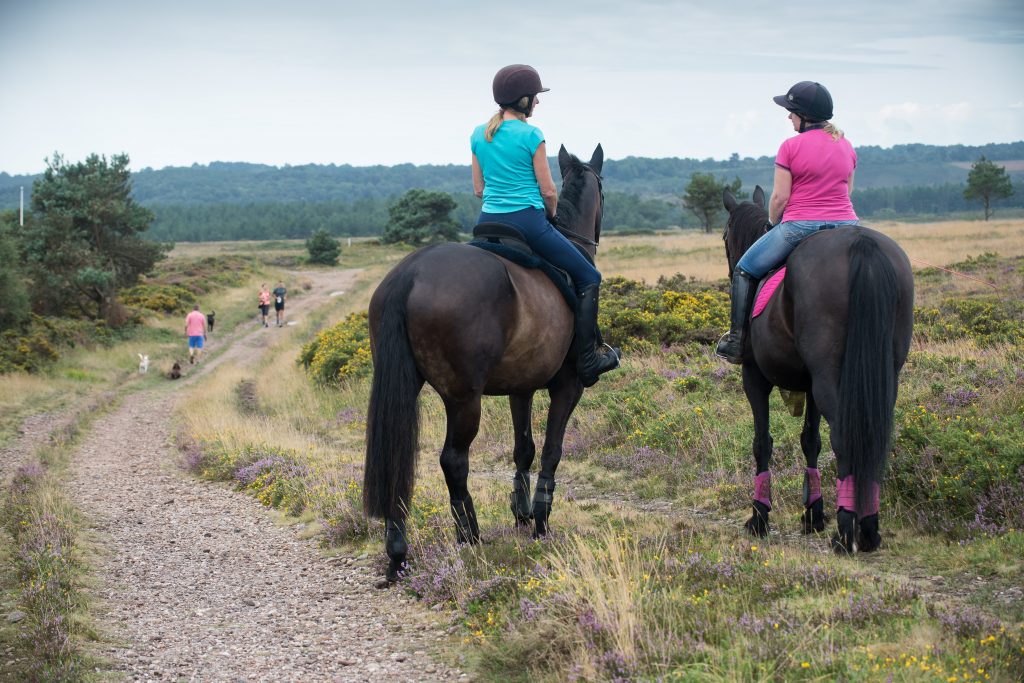Devon horse riders have joined forces with conservationists to encourage fellow equestrians to be more aware of nature, wildlife and people when they visit one of Britain’s rare, protected lowland heathlands near Exeter.
The East Devon Pebblebed Heaths are recognised as one of Europe’s most important conservations sites covering around 1,100 hectares of linked heaths between the Exe and Otter estuaries. With over 3,000 different species of flora and fauna, including rare heathland specialists, the area is protected by national and European designations.

The heaths also provide a welcome space for recreational activities with more than 400,000 visits a year recorded. As well as providing open access to those on foot, cyclists and horse riders are permitted across much of the heathland.
The Pebblebed Horse Code is one of a series of voluntary codes of conduct that have been launched this year with the aim of promoting mutual respect among all users of this threatened landscape. The Pebblebed Dog Code was launched in the spring and the Pebblebed Bike Code was launched this summer.
The code has been developed by experts from the Pebblebed Heaths Conservation Trust, in partnership with the South East Devon Habitat Regulations Partnership, the RSPB and Devon Wildlife Trust, with input from the local horse riding community.
Katie Lee from East Budleigh has been riding on the heaths for seven years and described the voluntary code as a “common sense” way horse riders can help preserve the landscape. “I feel very lucky to have the heaths on my doorstep,” she said. “It’s a very therapeutic place to ride and we should all do our bit to preserve this precious area.
“The code is a common sense approach to enjoying the heaths alongside wildlife and all those who use it, and if it encourages horse riders to work together to make the space safe and enjoyable for everyone for years to come, then that’s a good thing.”
The code has six elements:
- Slow down to pass people and give a friendly greeting
- Follow the tracks and avoid widening paths
- Take care of yourself and the tracks which can be sensitive to damage
- Always shut the gates, follow signs and report any problems
- Explore scheduled monuments like Woodbury Castle on foot
- Obtain the required licence for organised horse riding events
The South East Devon Habitat Regulations Executive Committee which funded the launch of the new codes, was established by East Devon District Council, Exeter City Council and Teignbridge District Council to protect the East Devon Pebblebed Heaths, in addition to two other internationally important conservation sites, the Exe Estuary and Dawlish Warren, for future generations.
“Today’s horse riders play an important role in the future of their sport and access rights as well as the condition of the heaths and the much-loved tracks,” said Kim Strawbridge, Pebblebed Heaths Site Manager. “By following the code, horse riders can be sure they are sharing this space in a positive way with wildlife and other people, while keeping the routes in good condition for everyone to use and enjoy.”
For full details please click here
